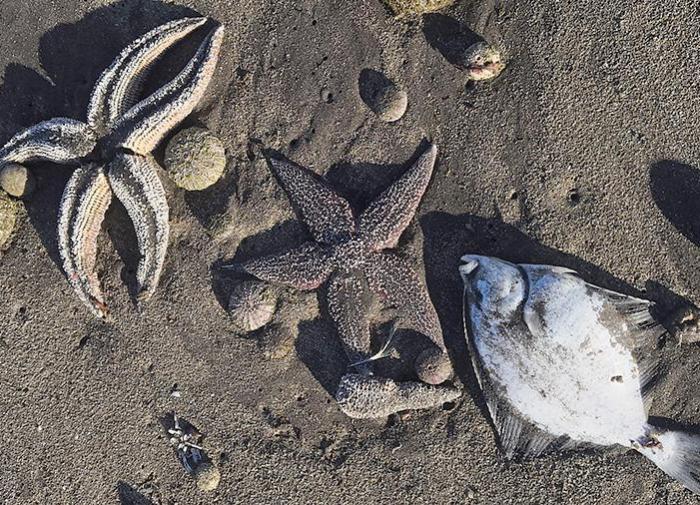On Monday, October 5, the head of the Ministry of Natural Resources of the Russian Federation Dmitry Kobylkin said that maximum permissible concentrations (MPC) for petroleum products in places of pollution in Kamchatka were not found. No chemical components were found in the samples either.

"All the samples that we took say that there was no excess in MPC for oil, oil products or their analogues neither in water nor on land," Kobylkin told reporters on Monday.
He clarified that there was the content of iron and phosphates in the samples was excessive, albeit insignificantly. "We did not find any chemical agents in the water. Neither in the water nor on land," Kobylkin said.
A special commission will examining the territory of military training grounds located near the city of Petropavlovsk-Kamchatsky to exclude possible leakage of pesticides.
In connection with the pollution of the Pacific Ocean in Kamchatka, all responsible departments have been mobilized. Researchers analysed sanitary-chemical, microbiological, virological and radiochemical indicators. According to the authorities, no deviations from the norm were identified. Samples of water, sand and samples of dead animals were sent to Moscow for analysis. The results will be announced within three or four days.
Earlier, photos and videos posted on social networks showed hundreds of dead sea animals all over the beach. Beach visitors complained of skin and eye burns after swimming. Water samples taken at Khalaktyrsky beach showed an excess of the maximum permissible concentrations of oil products and phenols.
Greenpeace discovered several centres of pollution in the bays of Kamchatka. One of them is moving to the south of the peninsula.
"The team recorded pollution in the form of several stains of unknown origin, one of which is moving to the south of the Kamchatka Peninsula, towards the South Kamchatka Wildlife Refuge, a UNESCO World Heritage Site known as Volcanoes of Kamchatka," the message posted on the Greenpeace website said.
During the expedition to Kamchatka, activists inspected the bays south of Petropavlovsk-Kamchatsky, including Vilyuchinskaya, Salvation, Bezymyannaya and other bays. "In different places we observed yellowish foam on the surface of the ocean, the water was opaque. In one of the locations we found dead animals. The stain, or rather a certain mass, because it is not only on the surface, but also at depth, is moving along the coastline," Greenpeace Russia representative Vasily Yablokov said.
Meanwhile, officials say that a change in the color of the water and the mass death of animals in Kamchatka are most likely unrelated to "man-made" reasons. The research that has been conducted so far indicates no excessive concentrations of harmful substances that usually take place during oil spills, Dmitry Kobylkin, the Minister of Natural Resources and Environment said.
At the end of September, Kamchatka surfers said that the the color of the water on the Khalaktyrsky beach in Avacha Bay changed. They complained that their eyes were swollen and reddened and their skin was irritated after swimming in that water. Local residents posted messages on social networks about thousands of dead sea animals that had been washed ashore, including octopuses, sea urchins, and starfish.
No comments :
Post a Comment